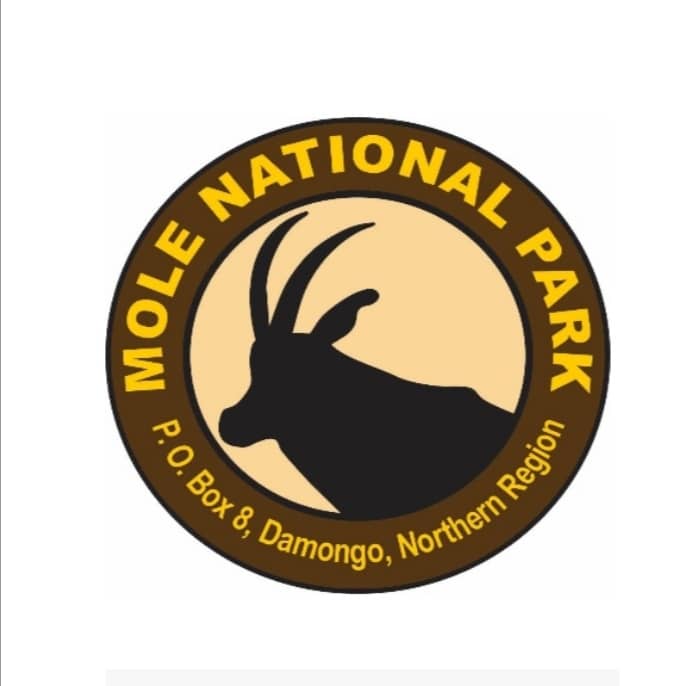
The landscape of Mole National Park stems from a combination of natural processes and physical geological and biological features which create exceptional and outstanding natural beauty. The variety of existing habitats, topographic features, vegetation, micro-climate conditions, escarpments, rock outcrops, caves, birds, sites for migratory birds, landforms, waterfalls, rivers, and friendly savannah elephants, is remarkable.
The main geographic feature of the Mole National Park is the Konkori Escarpment. This escarpment, which runs from north to south and leans along the western side of the Park, is a beautiful sandstone ridge approximately 250 metres high. This escarpment also provides a scenic panoramic view of Mole National Park. Its attractive nature is unsurpassed in the whole of Northern Ghana.
Soil has been described as ‘a sort of living organism’. It is the surface part of the earth’s crust formed due to disintegration of rocks or minerals under the impact of local climate and drainage, as well as the action of plant and animal remains.
The Northern Region has a distribution of two major types of soil that critically influence agricultural and other subsistence activities. The first, and most commonest, which covers nearly 70% of the savannah region, is the ‘Groundwater lateritic soil’. The second is known as the savannahOchro soil (The Greek ‘Ochro’ means highly coloured), and covers 30% of the savannah area.
Groundwater lateritic soil is yellowish-brown or yellowish-grey in colour. It is highly acidic, and poor in organic matter and nutrients. This kind of soil, therefore, poses problems to farmers in the northern savannahs.
The other major northern savannah soil type, the savannah ochrosol is developed over sandstones, granites and Birrimian rocks. It is an acidic, well–drained, porous loamy soil. Because it is developed in savannah land with less rainfall than occurs in forestlands, it does not undergo leaching. This means that it does contain an appreciable amount of nutrients and is generally alkaline (Dickson and Benneh 2001: 37–38).
It is well–attested that the relatively deep savannah ochrosols of the Voltaian sandstone in Gonja and Dagomba have long been the leading areas in Ghana for the production of yam, guinea corn and millet.
The soils of Mole National Park are dominantly plinthic Ferrasols in the southern sector and rhodic nitisols in the north. Ferrasols often develop a hardened layer at a depth of 0.2 – 1.2 metres. Iron pan or laterite outcrops, which are the result of the exposure of iron-rich horizons (plinthite; hence plinthic Nitosols) to erosion processes, are common throughout the Park. A summary of the soil types is given in the Table below.





Soils of Mole National Park
Soil has been described as ‘a sort of living organism’. It is the surface part of the earth’s crust formed due to the disintegration of rocks or minerals under the impact of local climate and drainage, as well as the action of plant and animal remains.
The Northern Region has a distribution of two major types of soil that critically influence agricultural and other subsistence activities. The first, and commonest, which covers nearly 70% of the savannah region, is the ‘Groundwater lateritic soil’. The second is known as the savannahOchro soil (The Greek ‘Ochro’ means highly coloured), and covers 30% of the savannah area.
Groundwater lateritic soil is yellowish brown or yellowish grey in colour. It is highly acidic, and poor in organic matter and nutrients. This kind of soil, therefore, poses problems to farmers in the northern savannahs.
The other major northern savannah soil type, the savannahochrosol is developed over sandstones, granites and Birrimian rocks. It is an acidic, well–drained, porous loamy soil. Because it is developed in savannah land with less rainfall than occurs in forestlands, it does not undergo leaching. This means that it does contain an appreciable amount of nutrients and is generally alkaline (Dickson and Benneh 2001: 37–38).
It is well–attested that the relatively deep savannahochrosols of the Voltaian sandstone in Gonja and Dagomba have long been the leading areas in Ghana for the production of yam, guinea corn and millet.
The soils of Mole National Park are dominantly plinthic Ferrasols in the southern sector, and rhodic nitisols in the north. Ferrasols often develop a hardened layer at a depth of 0.2 – 1.2 metres. Iron pan or laterite outcrops, which are the result of the exposure of iron-rich horizons (plinthite; hence plinthic Nitosols) to erosion processes, are common throughout the Park. A summary of the soil types is given in the Table below.
Soils of Mole National Park
Soil Type | Characteristics | Location | Geology |
| Ferrasol | Ferraltic B horizon i.e. highly weathered and a high content of Kaolinite and sesquioxides. | Upper slopes. | Voltaian System central ridge and Cape Coast granitoids. |
| Nitisol | Argic B horizon, i.e. clay content higher than in overlying horizon. | Middle slopes and flat valley plains away from streams. | |
| Vertisols | Clay .rich (> 30% in the top 18 cm) dark soil. | Valley floor in the centre of the Park. | |
| Solonchak | Halomorphic soil (high salinity). | Around Mole and Lovi rivers. |
The decreasing rainfall towards the northern end of the Park accounts for the fact that Nitisols appear more common there. The higher rainfall in the south results in stronger weathering and a higher Kaolinite content in the soil.
All soil types have low inherent fertility, are very susceptible to erosion, and are generally unsuitable for agriculture.

